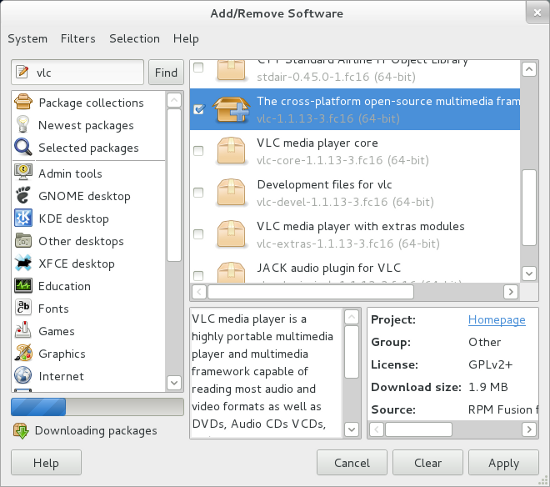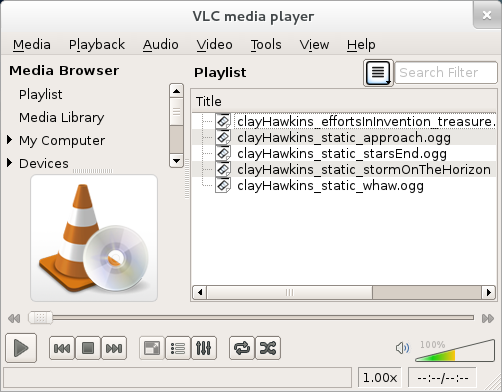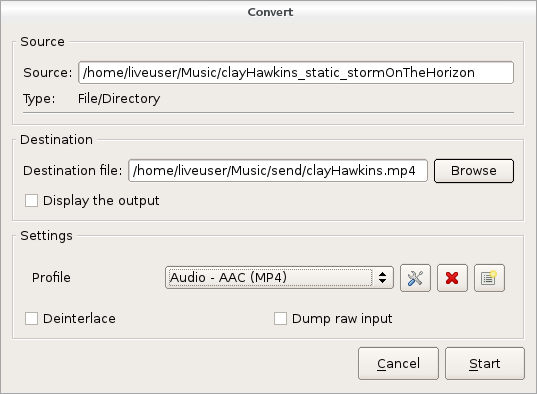VLC is the swiss army knife of multimedia playback. There's a saying among geeks, "If VLC doesn't play it, then it's not a multimedia file." and it is usually true. VLC can play your DVDs, CDs, music files, movies, audio and video streams, it can record from your webcam, from external cameras, it can transcode, and a lot more. The VLC programmers are even working on a project that will edit video. In otherwords, VLC is serious about media.
Install VLC from the Add/Remove Software application from the Activities Overview. Do a search for "vlc" for the quickest and most accurate search results. Install the software, accepting the certificate when asked.

Note that VLC will be available only if you've completed the RPM Fusion step.
Once VLC has been installed, it will offer to run; launch it to try it out.

There's not much to look at in the VLC interface, but don't let that fool you. Here's a few things you can do with this powerful little application:
Play DVDs
To play a DVD, insert the DVD into your computer's drive and then open VLC. Open the Media menu and select Open Disc
Navigate the chapters and titles of the DVD with either your keyboard or mouse.
Play CDs
To play a CD, insert the CD into your computer's drive and then open VLC. Open the Media menu and select Open Disc
Play Music Files
To play mp3, m4a, ogg, flac, wma, and other music files in VLC, you can either use the Media menu and choose Open File.
Alternately, you can wield the power of Playlists by using the View menu and selecting Playlist. Drag the files you wish to hear into the playlist and enjoy your mix.

Play Streaming Media
Some events stream live over the internet. While you might be able to see these in a web browser, sometimes the web interface is poorly designed or just not convenient for how you work. In that case, use VLC to watch a media stream instead.
To open a media stream in VLC, use the Media media and choose Open Network Stream and enter the location of the stream when prompted.
Convert Media
There are so many different kinds of media files out there that inevitably a time is going to come when you need to convert from one file type to another. VLC can help with that, too.
- To convert media, use the Media menu and select Convert/Save
-
In the File tab, click the Add button and select the file or files
you wish to convert

- Click the Convert/Save button at the bottom of the window
- In the Destination section, provide a directory so that VLC knows where to save the converted files
- Select a profile from the drop-down menu of pre-sets. MP4 is best for Apple devices, ASF for Windows devices, and Linux will play anything
- Click start, and go get a cup of coffee; you're a multimedia pro now!
But Wait, There's More!
Believe it or not, there's yet more you can do with VLC, but we've covered the most typical uses. As always, don't hesitate to explore; there's all kinds of hidden gems in most of the applications you're using, so try to find them all!

